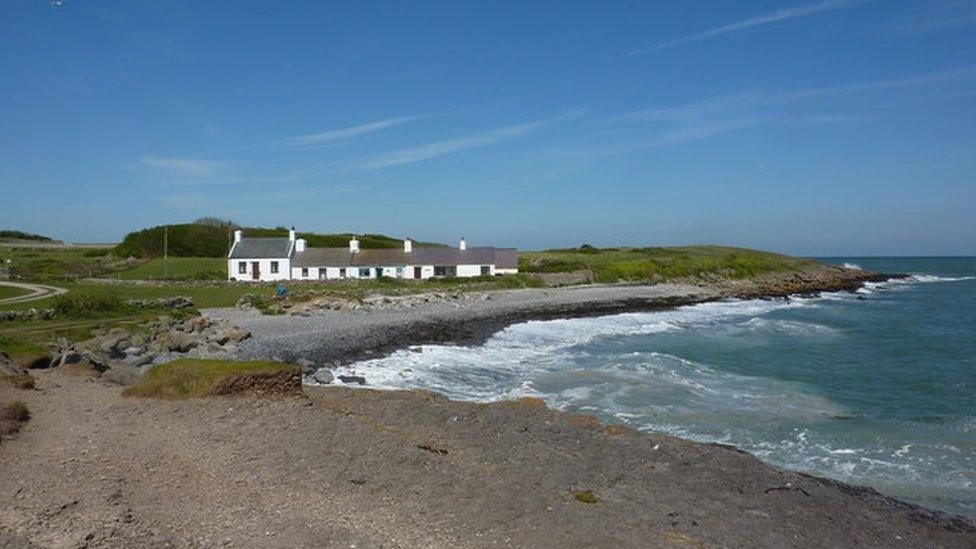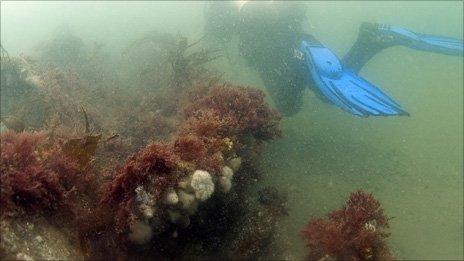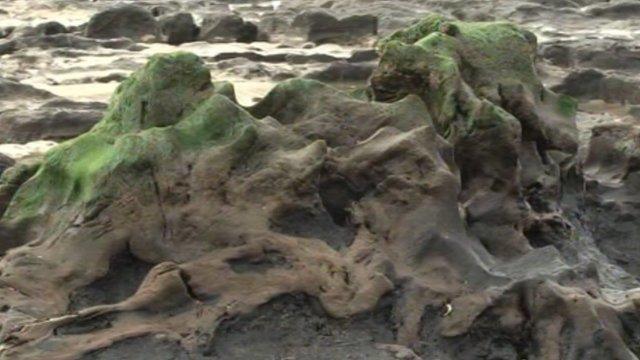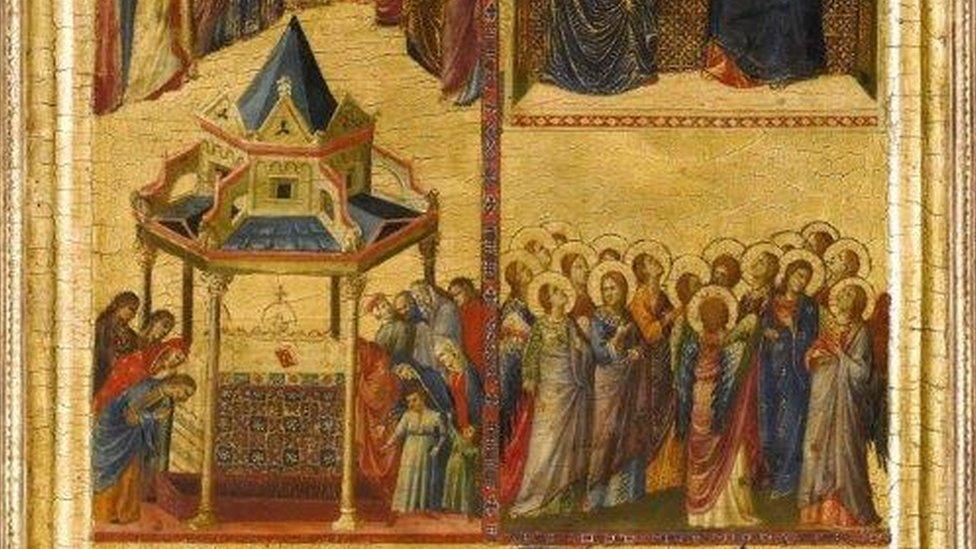Britain's largest gold nugget found off Anglesey coast
- Published

Vincent Thurkettle has been prospecting for 39 years
A prospector has found Britain's largest gold nugget - worth an estimated £50,000 - off the coast of Anglesey.
Vincent Thurkettle, 60, of Norfolk, found the 97g (3.4oz) hunk, about the size of a small chicken egg, on the seabed near Moelfre.
It is believed to be part of a £120m haul which sank with the Royal Charter ship during a hurricane in 1859.
"I was absolutely stunned when I first saw the nugget," Mr Thurkettle said.
He found it in 2012 but has now revealed details of the discovery for the first time, with the area having now been extensively searched for more gold.
His nugget is almost twice as heavy as the UK's second biggest, which was found in Cornwall in 1808, weighing 59g (2.08oz).
Treasure hunters have spent 150 years trying to find traces of the lost gold, which went down with the ship on 26 October, 1859, while on its way to Liverpool.
'Magical moment'
Mr Thurkettle spent seven summers scouring the shore before he was rewarded for his efforts, uncovering the nugget when shallow diving around 5m (16ft) from the shore and about 40m (131ft) from the wreck.
"I was really only expecting to find gold dust so I couldn't believe it when I realised it was a huge nugget, it was a magical moment," he said.

The gold nugget was found near Moelfre, on the Isle of Anglesey
"My first thought was that I had only ever seen nuggets like it in a museum. I didn't want to touch it at first, just to savour the extraordinary moment and burn into my memory how beautiful it looked.
"It was stuck in a crevice and as it lay where nature had hidden it, the nugget reminded me of a Faberge egg. When I picked it up it was surprisingly heavy."
As it was found close to a shipwreck, he had to notify the Receiver of Wreck, which administers wreck and salvage, and the nugget is now property of the Crown.
However, Mr Thurkettle expects a finder's fee, with the gold being kept under lock and key until it eventually goes on display in a museum.
He added: "It has broken my heart to part with the nugget, but I think it's important that it ends up in a museum for everyone to see."
- Published12 September 2011

- Published24 March 2016

- Published14 January 2014

- Published27 April 2016
